Assume that T_i occurs first and T_j goes on second. Assume T_i also writes to x. The second read of t_j should fail due to T_i already using the value of x. T_i is younger than T_j and if T_j uses the last committed version of x, it shall cause a stale value being used if T_i writes to x.
You need to abort the writing transaction t_j during a read, write or at commit time due to the the potential for a stale value being used. If the writing transaction didn't abort, and someone else read and used the old value, the database is not serializable. As you would get a different result if you ran the transactions in a different order. This is what the text quoted means by timestamp order.
Any two reads of the same value at the same time is dangerous as it causes a not accurate view of the database, it reveals a non-serializable order. If three transactions are running and all use x, then the serializable order is undefined. You need to enforce one read of x at a time, and this forces the transactions to be single file and see the last transaction's x. So t_i then t_j, then t_k in order, finishing before the next one starts.
Think what could happen even if t_j were not to write, it would use a value that technically doesn't exist in the datbase that is stale, it would have ignored the outcome of t_i if t_i wrote.
If three transactions all read x and don't write x, then it is safe to run them at the same time. You would need to know in advance that all three transactions don't write to x.
As in the whitepaper Serializable Snapshot Isolation attests, the dangerous structure is two read-write dependencies. But a read-write x followed by a read x is dangerous also due to the value being stale if both transactions run at the same time, it needs to be serializable, so you abort the second read x as there is a younger transaction using x.
I wrote a multiversion concurrency implementation in a simulation. See the simulation runner. My simulation simulates 100 threads all trying to read and write two numbers, A and B. They want to increment the number by 1. We set A to 1 and B to 2 at the beginning of the simulation.
The desired outcome is that A and B should be set to 101 and 102 at the end of the simulation. This can only happen if there is locking or serialization due to multiversion concurrency control. If you didn't have concurrency control or locking, this number will be less than 101 and 102 due to data races.
When a thread reads A or B we iterate over versions of key A or B to see if there is a version that is <= transaction.getTimestamp() and committed.get(key) == that version. If successful, it sets the read timestamp of that value as the transaction that last read that value. rts.put("A", transaction)
At commit time, we check that the rts.get("A").getTimestamp() != committingTransaction.getTimestamp(). If this check is true, we abort the transaction and try again.
We also check if someone committed since the transaction began - we don't want to overwrite their commit.
We also check for each write that the other writing transaction is younger than us then we abort. The if statement is in a method called shouldRestart and this is called on reads and at commit time and on all transactions that touched a value.
public boolean shouldRestart(Transaction transaction, Transaction peek) {
boolean defeated = (((peek.getTimestamp() < transaction.getTimestamp() ||
(transaction.getNumberOfAttempts() < peek.getNumberOfAttempts())) && peek.getPrecommit()) ||
peek.getPrecommit() && (peek.getTimestamp() > transaction.getTimestamp() ||
(peek.getNumberOfAttempts() > transaction.getNumberOfAttempts() && peek.getPrecommit())
&& !peek.getRestart()));
return defeated;
}
see the code here The or && peek.getPrecommit() means that a younger transaction can abort if a later transaction gets ahead and the later transaction hasn't been restarted (aborted) Precommit occurs at the beginning of a commit.
During a read of a key we check the RTS to see if it is lower than the reading than our transaction. If so, we abort the transaction and restart - someone is ahead of us in the queue and they need to commit.
On average, the system reaches 101 and 102 after around < 300 transaction aborts. With many runs finishing well below 200 attempts.
EDIT: I changed the formula for calculating which transactions wins. So if another transactions is younger or the other transactions has a higher number of attempts, the current transactions aborts. This reduces the number of attempts.
EDIT: the reason there was high abort counts was that a committing thread would be starved by reading threads that would abort restart due to the committing thread. I added a Thread.yield when a read fails due to an ahead transaction, this reduces restart counts to <200.
